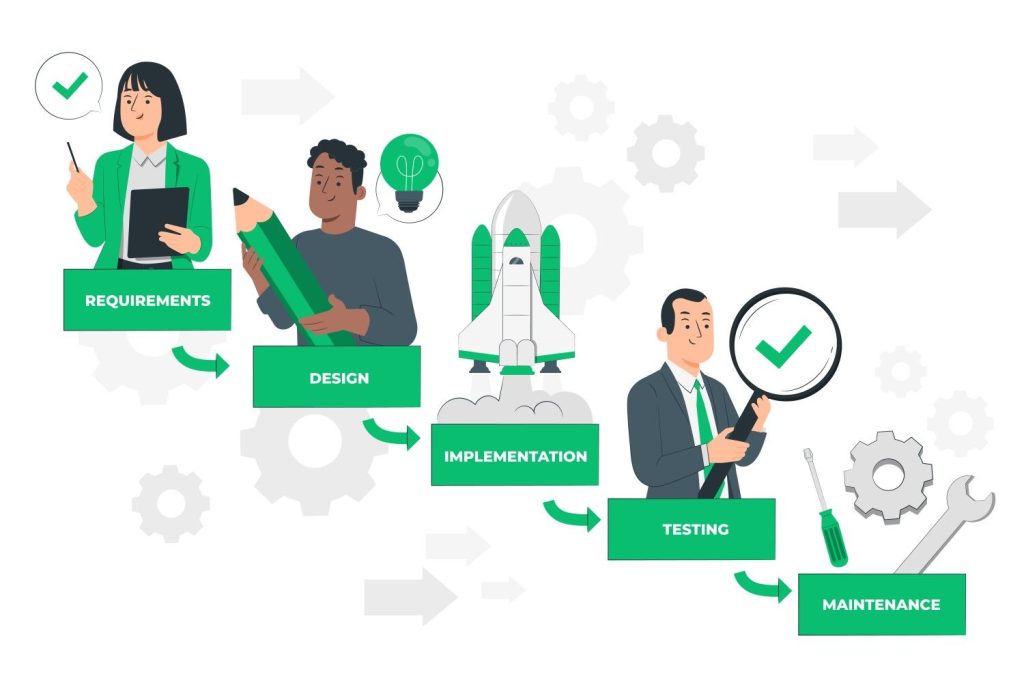Improving team productivity and efficiency is essential for businesses to achieve their goals and remain competitive. It ensures that team members are working together effectively, avoiding duplication of effort, and achieving their objectives in a timely manner.
To help teams overcome these challenges, there are several easy ways to improve productivity and efficiency. By streamlining communication channels, leveraging workflow management tools, adopting agile methodologies, fostering a collaborative environment, and measuring and analyzing performance, teams can achieve their goals more effectively. In this article, we will explore seven such ways in detail, providing practical tips and advice for teams looking to improve their productivity and efficiency.
Key Takeaways
-
- Effective communication is key to improving team productivity and efficiency.
- Workflow management tools can help teams streamline their processes and achieve their objectives more efficiently.
- Adopting agile methodologies and fostering a collaborative environment can help teams work together more effectively.
Streamlining Communication Channels
It is crucial to establish clear channels of communication that minimize confusion and enable team members to work together efficiently. Here are some ways to streamline communication channels:
Reducing Email Overload
Email overload can be a significant source of stress and productivity loss for teams. To reduce email overload, team members can establish clear guidelines on when to use email and when to use other communication channels. For instance, urgent or time-sensitive messages can be sent via messaging systems or phone calls, while non-urgent messages can be sent via email.
Another way to reduce email overload is to use email filters and folders to organize incoming messages. Team members can also unsubscribe from newsletters and other non-essential email lists to reduce the number of incoming messages.
By implementing efficient messaging systems and reducing email overload, teams can streamline communication channels and improve productivity.
Leveraging Workflow Management Tools

One of the easiest ways to improve team productivity and efficiency is to leverage workflow management tools. These tools can help automate routine tasks, streamline processes, and provide better visibility into project progress. In this section, we will explore two popular workflow management tools that can help teams work more efficiently.
Automating Routine Tasks
One of the biggest time-wasters for teams is performing routine tasks manually. Fortunately, workflow management tools like Organflow can help automate these tasks, freeing up time for more important work. For example, Organflow can automatically send reminders to team members when a task is due, assign tasks to team members based on their workload, and even generate reports on project progress.
By automating routine tasks, teams can focus on more important work, such as brainstorming new ideas or collaborating on complex projects. This can lead to higher levels of productivity and efficiency, as team members are able to use their time more effectively.
Utilizing Organflow for Task Management
Organflow is one of the best workflow management software available in the market. It provides an easy-to-use interface that allows teams to manage tasks, track progress, and collaborate on projects. With Organflow, teams can create custom workflows for different projects, assign tasks to team members, and track progress in real-time.
Organflow also provides powerful reporting and analytics capabilities, allowing teams to gain valuable insights into project performance. For example, teams can track the amount of time spent on each task, identify bottlenecks in the workflow, and optimize processes for maximum efficiency.
Overall, leveraging workflow management tools like Organflow can help teams work more efficiently and productively. By automating routine tasks and providing better visibility into project progress, teams can focus on more important work and achieve better results.
Adopting Agile Methodologies

Adopting Agile methodologies can be a game-changer for any team looking to improve their productivity and efficiency. It is designed to help teams deliver high-quality work in a timely and efficient manner. Here are a few ways teams can adopt Agile methodologies to improve their productivity:
Facilitating Daily Stand-Ups
One of the most important aspects of Agile is the daily stand-up meeting. This is a short meeting where team members gather to discuss their progress, any challenges they are facing, and their plans for the day. The meeting should be kept brief and focused, with each team member providing a quick update on their work. By facilitating daily stand-ups, teams can stay on track and ensure that everyone is working towards the same goals.
Embracing Sprint Planning
Another key aspect of Agile is sprint planning. This involves breaking down a project into smaller, more manageable tasks, and then assigning those tasks to team members. Sprint planning typically takes place at the beginning of each sprint, which is a set period of time during which the team works to complete a specific set of tasks. By embracing sprint planning, teams can ensure that everyone is clear on their responsibilities and that work is being completed efficiently.
In conclusion, adopting Agile methodologies can be a powerful way to improve team productivity and efficiency. By facilitating daily stand-ups and embracing sprint planning, teams can stay on track, work more efficiently, and deliver high-quality work in a timely manner.
Fostering a Collaborative Environment
Creating a collaborative environment is crucial for improving team productivity and efficiency. When team members feel comfortable working together, they are more likely to share ideas, ask for help, and work towards common goals. Here are two ways to foster a collaborative environment:
Encouraging Team Building
Encouraging team building activities can help team members get to know each other better and build stronger relationships. Some team building activities that can be done in the workplace include:
-
- Group lunches or outings
- Team building games or exercises
- Volunteer activities
- Workshops or training sessions
Promoting Open Communication
Open communication is essential for collaboration. Team members should feel comfortable sharing their thoughts, ideas, and concerns with each other. Promoting open communication can be done in several ways:
-
- Use collaboration tools like organflow or Asana or Trello to keep everyone informed and up-to-date
- Provide opportunities for one-on-one meetings between team members and their managers
By fostering a collaborative environment through team building and open communication, teams can work together more effectively and efficiently.
Measuring and Analyzing Performance
Measuring and analyzing performance is crucial to improving team productivity and efficiency. By setting clear KPIs and conducting regular performance reviews, managers can identify areas for improvement and take action to address them.
Setting Clear KPIs
Setting clear KPIs is the first step in measuring and analyzing team performance. KPIs should be specific, measurable, achievable, relevant, and time-bound. By setting clear KPIs, team members will have a clear understanding of what is expected of them and will be more motivated to achieve their goals.
To set clear KPIs, managers should first identify the team’s overall goals and objectives. They should then break down these goals into specific, measurable targets that can be tracked over time. For example, if the goal is to increase sales revenue, a specific KPI could be to increase the number of sales calls made per week.
Regular Performance Reviews
Regular performance reviews are also essential for measuring and analyzing team performance. During performance reviews, managers should provide feedback on individual performance and identify areas for improvement. They should also discuss progress towards KPIs and set new targets for the upcoming period.
Performance reviews should be conducted on a regular basis, such as quarterly or bi-annually, to ensure that team members are staying on track and making progress towards their goals. Managers should also provide ongoing feedback throughout the year to help team members stay motivated and focused.
In conclusion, measuring and analyzing performance is critical to improving team productivity and efficiency. By setting clear KPIs and conducting regular performance reviews, managers can identify areas for improvement and take action to address them.
Frequently Asked Questions
There are several strategies that can be implemented to enhance team efficiency in the workplace. One of the most effective strategies is to encourage open communication and collaboration. This can be achieved by creating an environment where team members feel comfortable sharing ideas, feedback, and information. Another effective strategy is to set and track attainable goals. This can help team members stay focused and motivated, and ensure that everyone is working towards the same objectives.
There are several innovative methods that can be used to boost team performance. One such method is to implement gamification techniques. This can involve creating challenges or competitions that encourage team members to work together to achieve a common goal. Another innovative method is to use technology to streamline processes and automate tasks. This can help team members save time and focus on more important tasks.
Productivity and efficiency can be defined as the ability of a team to produce high-quality work in a timely and effective manner. These metrics can be measured using a variety of tools and techniques, including time tracking software, project management tools, and performance metrics. It is important to establish clear metrics and goals to measure productivity and efficiency, and to regularly review and analyze this data to identify areas for improvement.
There are several practical examples of increasing efficiency within a team. One example is to streamline processes and eliminate unnecessary steps. This can involve automating tasks, simplifying workflows, and reducing bureaucracy. Another example is to encourage collaboration and knowledge sharing. This can involve creating cross-functional teams, implementing mentoring programs, and providing opportunities for training and development.
The top three tactics to improve team effectiveness are to establish clear goals and metrics, encourage open communication and collaboration, and provide opportunities for training and development. By setting clear goals and metrics, team members can stay focused and motivated. By encouraging open communication and collaboration, team members can share ideas and work together to achieve common objectives. And by providing opportunities for training and development, team members can acquire new skills and knowledge to improve their performance.
Small group teams can increase their productivity levels by implementing several strategies. One strategy is to establish clear roles and responsibilities for each team member. This can help ensure that everyone is working towards the same objectives and that there is no duplication of effort. Another strategy is to use technology to streamline processes and automate tasks. This can help team members save time and focus on more important tasks. Finally, small group teams can benefit from regular feedback and communication to identify areas for improvement and optimize their performance.
Join the Revolution
Embrace the future of workflow management with Organflow. Our platform not only simplifies your processes but also unlocks new potentials for your business. With Organflow, achieve a higher level of efficiency, collaboration, and innovation.


